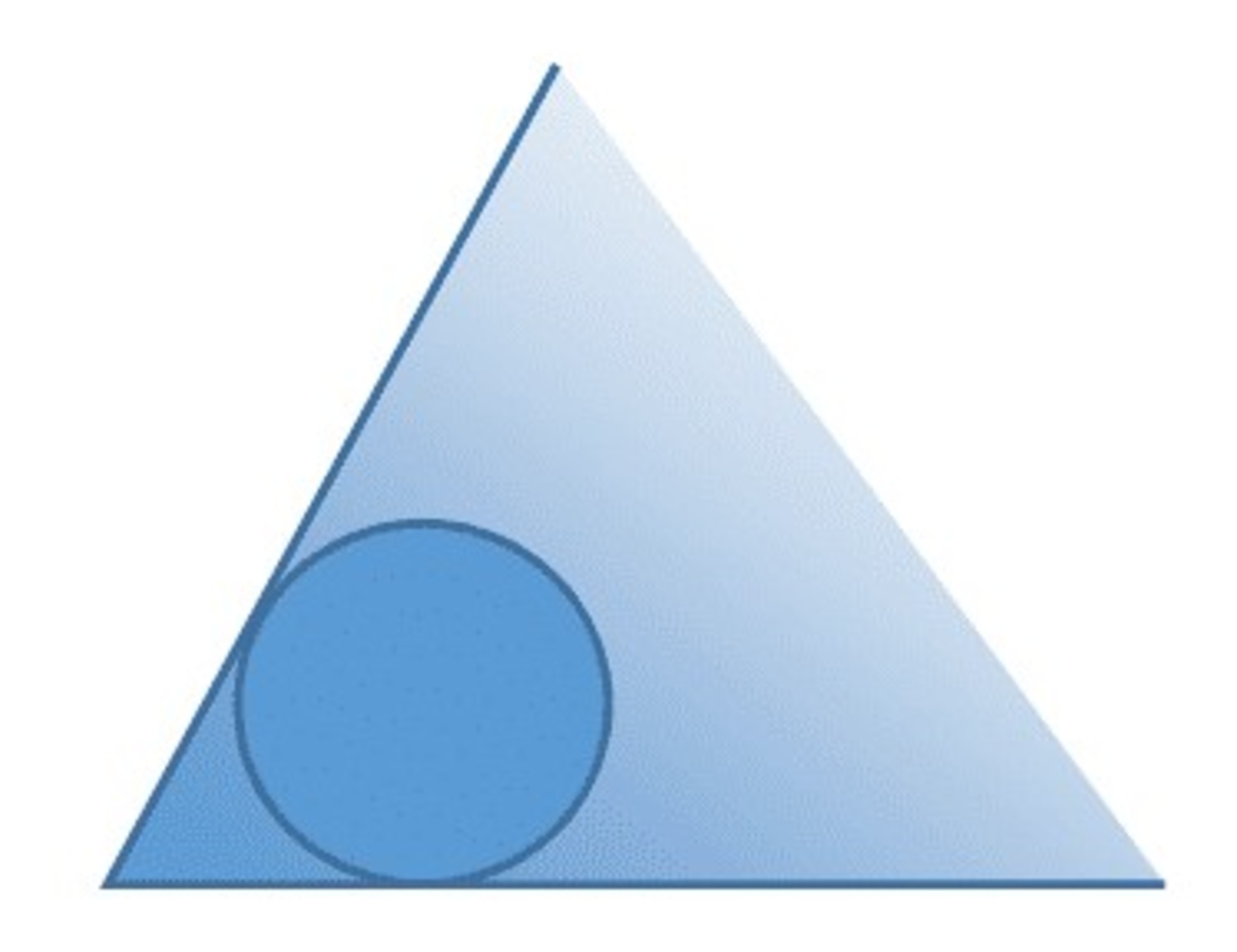Wanted: A Pair of Friends
 The angle between the lines is
. The lonely unit circle should be joined by a pair of circles.
The angle between the lines is
. The lonely unit circle should be joined by a pair of circles.
These should be equal to each other in size, tangent to each other, and tangent to the unit circle. Each of them should also be tangent to one of the lines.
Two sets of such circles exist. Find the difference in radius between the pairs.
The answer is 0.78461.
This section requires Javascript.
You are seeing this because something didn't load right. We suggest you, (a) try
refreshing the page, (b) enabling javascript if it is disabled on your browser and,
finally, (c)
loading the
non-javascript version of this page
. We're sorry about the hassle.
B E = 1 , ∠ B O E = 3 0 , O E = 3
Let the radius is the small circle be A D = r so B A = r + 1 and construct rectangle A C E D so B C = 1 − r
∠ A O D = 1 5 so O D = tan 1 5 r = 2 − 3 r = r ( 2 + 3 )
D E = 3 − r ( 2 + 3 ) = A C
Now we can use the Pythagorean theorem on △ B A C and solve for r
( 1 − r ) 2 + ( r ( 2 + 3 ) − 3 ) 2 = ( r + 1 ) 2
( 7 + 4 3 ) r 2 + ( − 1 0 − 4 3 ) r + 3 = 0
The quadratic formula gives two solutions. The second is not extraneous because it's the radius of the larger circles!
r = 2 1 − 1 2 3 or r = 1
The difference is 1 − ( 2 1 − 1 2 3 ) = 1 2 3 − 2 0 ≈ . 7 8 4 6 0 9 6 9